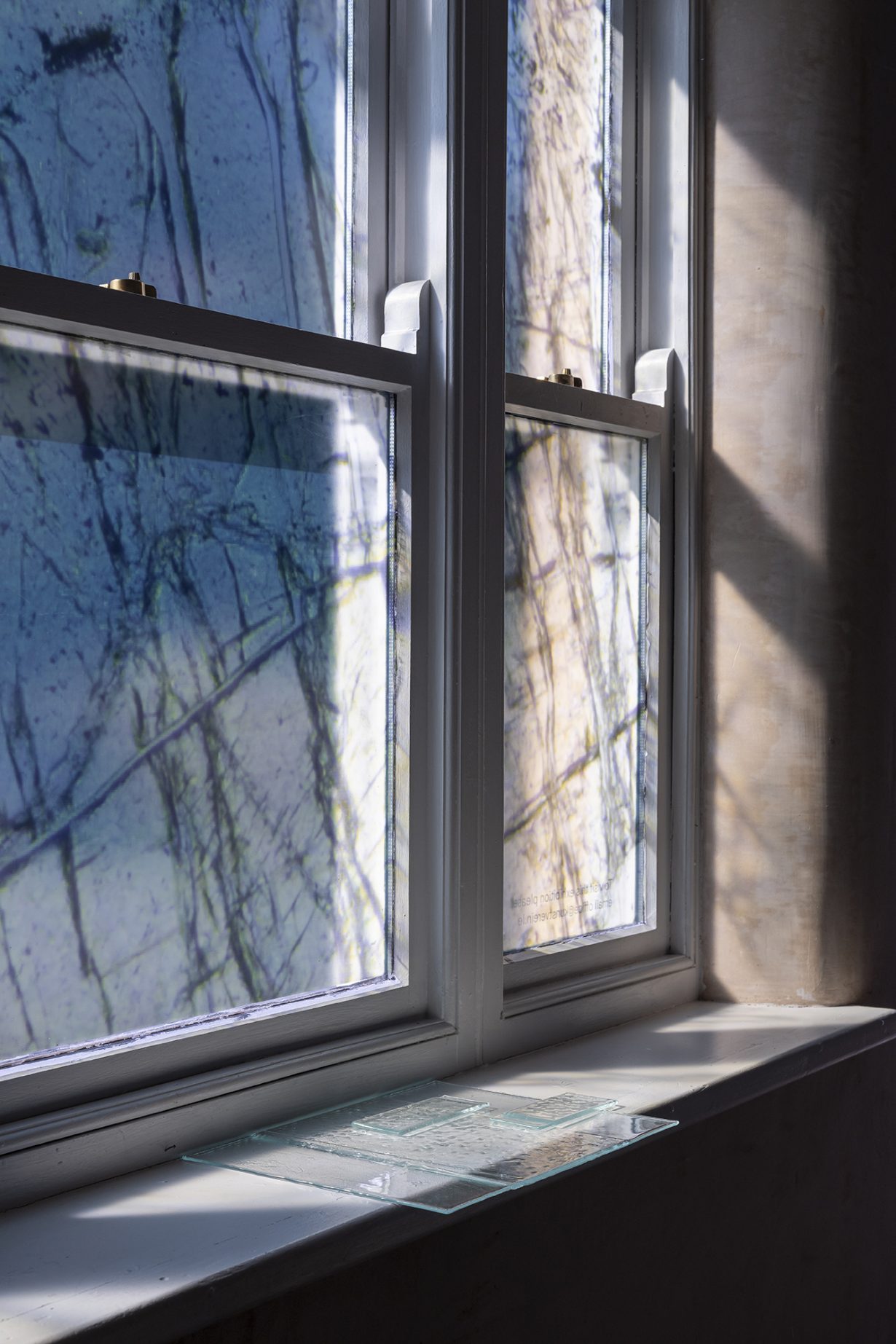At this Irish take on the Kunstverein model, Farrington finds a material aesthetic for the tension between construction and deconstruction
Dead centre of the modest exhibition space at Kunstverein Aughrim – an experimental Irish manifestation of the German ‘art club’ institutional model – sits a bulky, knee-high boulder of County Wicklow granite. This is not, as first impressions suggest, part of the exhibition by Irish sculptor Marie Farrington, an artist with keen geological and archaeological interests. Rather, it occupies a defined place within the repurposed townhouse accommodating this nationally novel art initiative. Installed by artist-designer team Forerunner as a feature of their commissioned interior renovation – at the suggestion of curator-director Kate Strain – the rocky chunk is an eccentric (and eco-centric) statement of institutional grounding: a foundation stone for the exhibition programme, or an outsize paperweight, perhaps, holding the imported kunstverein concept in place.
Solidity and stability, then, at the heart of things. In Diagonal Acts, Farrington distributes a lighter, much less imposing set of objects around the gallery. Laid in neat patterns on the concrete floor, resting against unpainted plastered walls, slotted into timber shelving units, the crafted exactitude of these low-key sculptures contrasts with the natural heft of the granite centrepiece. Some especially smallscale inclusions, such as Slides and Registers (all works 2025) – flat or curved little panes of ‘slumped and fused glass’, the former on a windowsill, the latter on the floor – are slight and hard to spot. These transparent tiles and moulded panels, each uniquely patterned with tiny air bubbles, might be the finessing components of an in-progress fit-out, but here they remain unused, fragile, unfixed: clear things without clear purpose.

Other sculptures, linked to other contexts of careful labour, look more durably utilitarian. Toolkit re-membered is a collection of trowels, forks and assorted shovelling, scraping, cutting utensils, custom-made from unlikely materials. Farrington combines mild steel, wax and resin, with anthracite (a hard, faintly lustrous form of coal) and volcanic olivine (an obscure-sounding green-grey silicate that is nonetheless, per Google, among the most abundant minerals on earth), fabricating instruments superficially suited to manual excavation. This ‘re-membered’ toolkit is laid out as if in preparation for an archaeological dig, or perhaps – given the objects’ aged, damaged or otherwise unusual appearance – as the discovered outcomes of such painstaking endeavour. Either way, these curiously crafted tools lack the necessary strength and integrity for digging. If used, the anthracite blades and olivine handles would crumble like the ground they were made to excavate – failing, falling apart, returning to the land. As archaeological implements – or artefacts – their imagined place in human history is uncertain; as composites of extracted matter, they are products of deep time, provisional aggregations formed from fragile leftovers of the ancient earth.
The exhibition title refers, in part, to Farrington’s method of zigzagging from one approach to time and place, or one artistic mode, or one investigative discipline, to another. Diagonal Acts features, for instance, invited perspectives on the show’s subjects and materials from positions of professional specialism. On a table in an adjoining reading room, we find technical drawings made in collaboration with an archaeological illustrator: finely detailed pencil-and-paper studies of the glass forms (and more) we encounter throughout the exhibition. On the main gallery window, a translucent vinyl decal (titled Through) displays the crisscrossing patterns visible in a microscopic photograph of olivine – an image captured by geologists at Trinity College, Dublin. Both additions typify Farrington’s efforts to couple muted, measured aesthetic finesse with adjusting angles of analytic focus. And as with other elements of Diagonal Acts, they signal her art’s combination of depth and delicacy, gravity and grace.
Diagonal Acts at Kunstverein Aughrim, 1 March – 31 May
From the Summer 2025 issue of ArtReview – get your copy.
